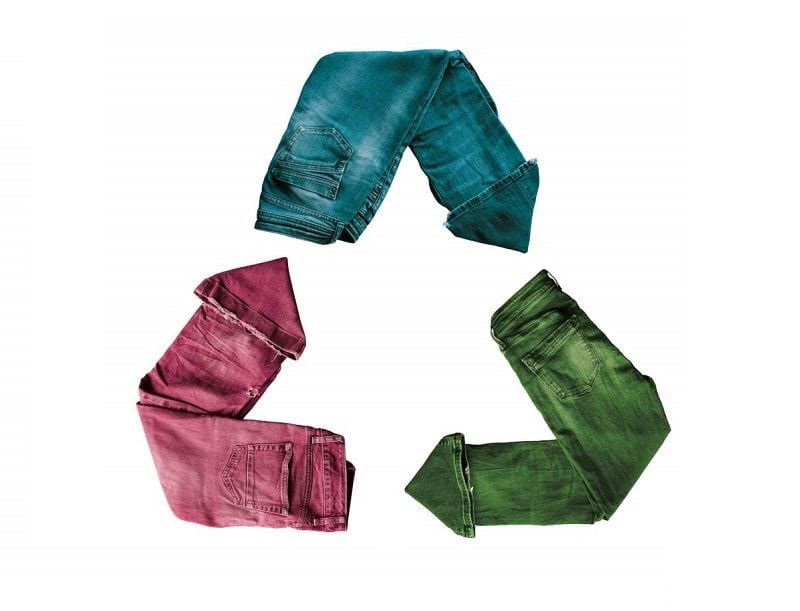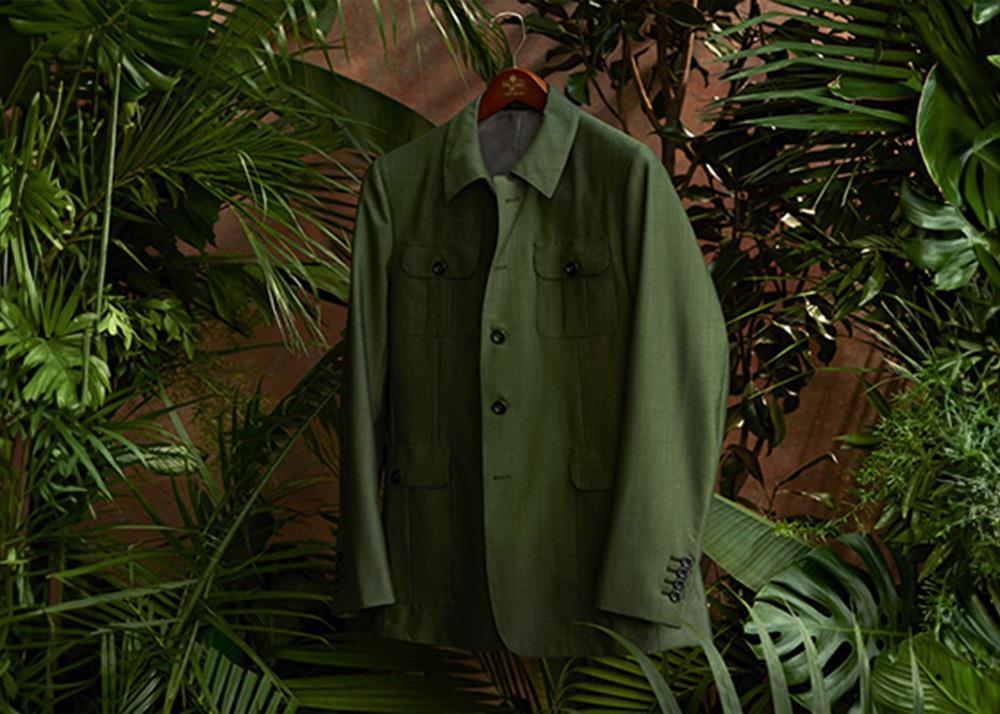Cape Town Sustainable Fashion: Eco-Friendly Trends to Watch
Cape Town Sustainable Fashion: Eco-Friendly Trends to Watch
Blog Article
Stay Ahead of the Curve by Checking Out Innovative Style Fads
In a sector as vibrant as style, remaining ahead entails even more than just adhering to existing patterns-- it requires an exploration of technology. The merging of innovation and fashion heralds a new period of customer interaction.

Welcoming Smart Textiles
Over the last few years, the garment industry has actually seen a transformative change with the integration of wise textiles, an innovative advancement that mixes modern technology with material. This development represents not just a combination of aesthetic appeals and capability but additionally a substantial jump towards sustainability and personalization in fashion. Smart textiles, also called e-textiles, installed innovative electronics such as sensing units and conductive strings within the material, allowing garments to connect with the atmosphere or the user.
These textiles are developed to keep an eye on physiological specifications, such as heart rate or body temperature level, supplying real-time health analytics. Beyond health and wellness applications, smart textiles are likewise being used for flexible apparel, which can alter shade or pattern in action to ecological stimuli, therefore offering a vibrant fashion experience.
Additionally, the advancement of energy-harvesting fabrics that generate power from motion or sunshine is leading the method for self-dependent wearable modern technology. This development is appealing to environmentally mindful customers and developers aiming to lower the eco-friendly impact of fashion. As r & d in this area breakthrough, clever fabrics are expected to become increasingly prevalent, improving the landscape of modern style with their multifunctional capacities.
The Rise of 3D Printing
Revolutionizing the manufacturing landscape, 3D printing has actually become a game-changer in the apparel industry. This advanced innovation has enabled designers to press the boundaries of creative thinking, generating elaborate and customized garments that were formerly unimaginable. By leveraging electronic style and additive manufacturing, 3D printing helps with the development of intricate geometries and patterns, permitting developers to experiment with new textures and frameworks.
A remarkable benefit of 3D printing in fashion is its capability to produce on-demand, lessening waste and decreasing supply requirements. This efficiency not only optimizes production procedures but likewise enables rapid prototyping, making it possible for developers to bring their visions to life in a much shorter duration. Furthermore, 3D printing sustains customization somewhat unrivaled by standard approaches, supplying unique styles and customized fits tailored to individual consumer preferences.
The increase of 3D printing has actually likewise democratized fashion, making it easily accessible to emerging designers who can currently produce premium items without considerable financial investment in traditional production framework. As modern technology proceeds to advancement, the garment industry is positioned to harness the full possibility of 3D printing, exploring new materials and techniques that will certainly redefine how style is conceived and generated.
Lasting Style Advancements
As the fashion business comes to grips with journalism need for ecological responsibility, sustainable style technologies have actually emerged at the forefront of transformative change. The growing recognition of ecological impact has actually fueled a shift towards even more eco-conscious methods and materials. Designers and brand names are currently prioritizing sustainability, incorporating techniques that decrease waste and reduce carbon footprints.
One significant advancement is the increase of circular style, which stresses recycling and upcycling to prolong the lifecycle of garments. This method not just minimizes waste yet additionally urges consumers to take on an extra mindful approach to clothes intake.
One my response more development exists in the adoption of cutting-edge dyeing strategies that make use of waterless procedures or natural dyes, thus reducing the substantial amounts of water and chemicals typically utilized in textile dyeing. Furthermore, advancements in biotechnology have actually resulted in the creation of lab-grown leather and fabrics, supplying cruelty-free and eco-friendly options to conventional products. Through these pioneering efforts, the style sector is making purposeful strides in the direction of a much more lasting future.

Tech-Integrated Garments
Tech-integrated apparel stands for a groundbreaking fusion of style and technology, reshaping exactly how people interact with their apparel. This ingenious domain name is marked by the check here addition of smart fabrics and embedded digital elements, boosting both capability and aesthetic appeal. From fitness trackers embedded in sports apparel to heated coats controlled by means of smart device apps, tech-integrated garments uses consumers extraordinary comfort and versatility.
Introducing brand names are driving this fad, focusing on creating garments that respond to ecological stimulations or user commands. As an example, some garments can change shade or pattern in reaction to temperature shifts, while others integrate biometric sensing units to monitor wellness metrics like heart rate or tension degrees. The seamless assimilation of technology into fabrics likewise prolongs to ecological sustainability, with initiatives to establish self-cleaning fabrics or garments that adapt to weather, thus reducing the demand for several layers.
In addition, the development of wearable technology is not simply restricted to apparel yet prolongs to accessories like watches and glasses, additional expanding the extent of tech-integrated fashion. As the industry remains to introduce, the capacity for modification and customization in garments expands, providing customers one-of-a-kind, tech-enhanced style experiences that satisfy their private needs and choices.
Future of Virtual Style
In recent times, the future of digital fashion has arised as a transformative pressure within the sector, leveraging improvements in digital modern technology to you can look here redefine how fashion is produced, experienced, and taken in. By integrating increased reality (AR), online fact (VR), and 3D style tools, designers can now craft interactive and immersive experiences that go beyond conventional fashion limits. Online style enables the creation of garments that exist only in digital environments, providing endless opportunities for development without the limitations of physical production.
This digital shift not just offers possibilities for innovative expression however additionally addresses sustainability worries inherent in typical fashion techniques. Cape Town Sustainable Fashion. By eliminating the demand for physical resources, online fashion reduces waste and minimizes carbon impacts. Furthermore, the surge of virtual style lines up with the raising customer need for customized and distinct experiences, as digital garments can be tailored and tailored to specific preferences effortlessly

Conclusion
The style market's future lies in the integration of ingenious technologies and sustainable methods. Digital style is positioned to redefine consumer interactions.
In recent years, the style sector has actually witnessed a transformative shift with the assimilation of clever textiles, a sophisticated advancement that blends modern technology with material.As the fashion sector grapples with the pressing demand for environmental obligation, lasting fashion developments have actually arised at the center of transformative change.In recent years, the future of digital style has emerged as a transformative pressure within the sector, leveraging developments in digital technology to redefine how style is produced, experienced, and consumed. The surge of digital fashion aligns with the boosting customer need for customized and special experiences, as virtual garments can be customized and tailored to private choices with ease.
The style sector's future lies in the combination of lasting practices and innovative innovations.
Report this page